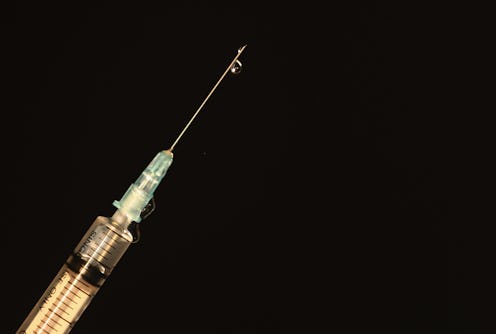News
Everything You Should Know About Lethal Injection
On Tuesday, Oklahoma witnessed a botched execution by lethal injection. Inmate Clayton Lockett died of a heart attack more than 40 minutes after the procedure, leading the state to postpone the second planned execution that day and order an investigation. The secrecy surrounding the drugs Oklahoma used were controversial before the incident even occurred, with Lockett and the second inmate, Charles Warner, suing Oklahoma for refusing to disclose details about the execution drugs.
The procedure that went awry utilized untested drug combinations. State officials say the drugs weren't at fault — rather, the needles damaged Lockett's veins — but the White House has deemed the execution inhumane. Since the implementation in the United States, 32 states have retained the death penalty and use lethal injection as their primary method. It's had a long history of opposition, with many critics viewing it as cruel and unusual punishment, and thus unconstitutional under the Eighth Amendment. But is it? Here's a rundown...
An Alternative to Hanging
The origin of lethal injections in the United States began during the late 1800s when a New York doctor, J. Mount Bleyer, suggested it would be more humane than hanging. Oklahoma's state medical examiner, Jay Chapman, also proposed the method of execution, then known as Chapman's Protocol, in 1977.
"An intravenous saline drip shall be started in the prisoner's arm, into which shall be introduced a lethal injection consisting of an ultra-short-acting barbiturate in combination with a chemical paralytic," the plan suggested.
Following approval from an anesthesiologist, Rev. Bill Wiseman introduced the procedure into the Oklahoma legislature where it was passed. Still, it wasn't used in the U.S. until 1982, when Texas inmate Charles Brooks Jr. was put to death.
Drug Combinations
Most lethal injections use a three-step drug cocktail: one to paralyze, one to knock unconscious, and one that shuts down the heart. Over the past 40 years, 1,377 executions have taken place and out of those, 1,202 prisoners have been put to death with some variation of the standard mix. There's actually an automated lethal injection machine that exists, but its use has faded as administrators and officials fear the repercussions that can come with mechanical failures. It seems like they haven't exactly been focusing on human error either, as of late.
The inmate gets strapped to a gurney and is covered with a sheet, after which intravenous lines are connected to the arms. The drugs are usually administered by a medical professional or prison employee who's behind a curtain or in another room.
Experimentation and Secrecy
Pharmaceutical companies have made it more difficult to obtain the drugs, with ethical concerns of their products being used for capital punishment. The European Union has also banned exporting the drugs. This leaves many states to experiment with their own never-before-used version of the cocktails, using drugs not regulated by the Food and Drug administration and leading to deaths that could "drag on."
Several states, including Oklahoma and Georgia, maintain secrecy laws that allow them to conceal the identities of makers and suppliers for lethal-injection drugs.
Concerns are also being raised over who does the procedure — critics say prison employees are often untrained, leading to botched executions.
Lockett's Not the First
A 2012 study published by the British Journal of American Legal Studies found that 270 U.S. executions out of 9,000 from 1900 to 2010 were botched, involving “departures from the protocol of killing someone sentenced to death.” The three percent may not seem like a grand number, but research determined lethal injection has had a higher botch rate than any other method.
